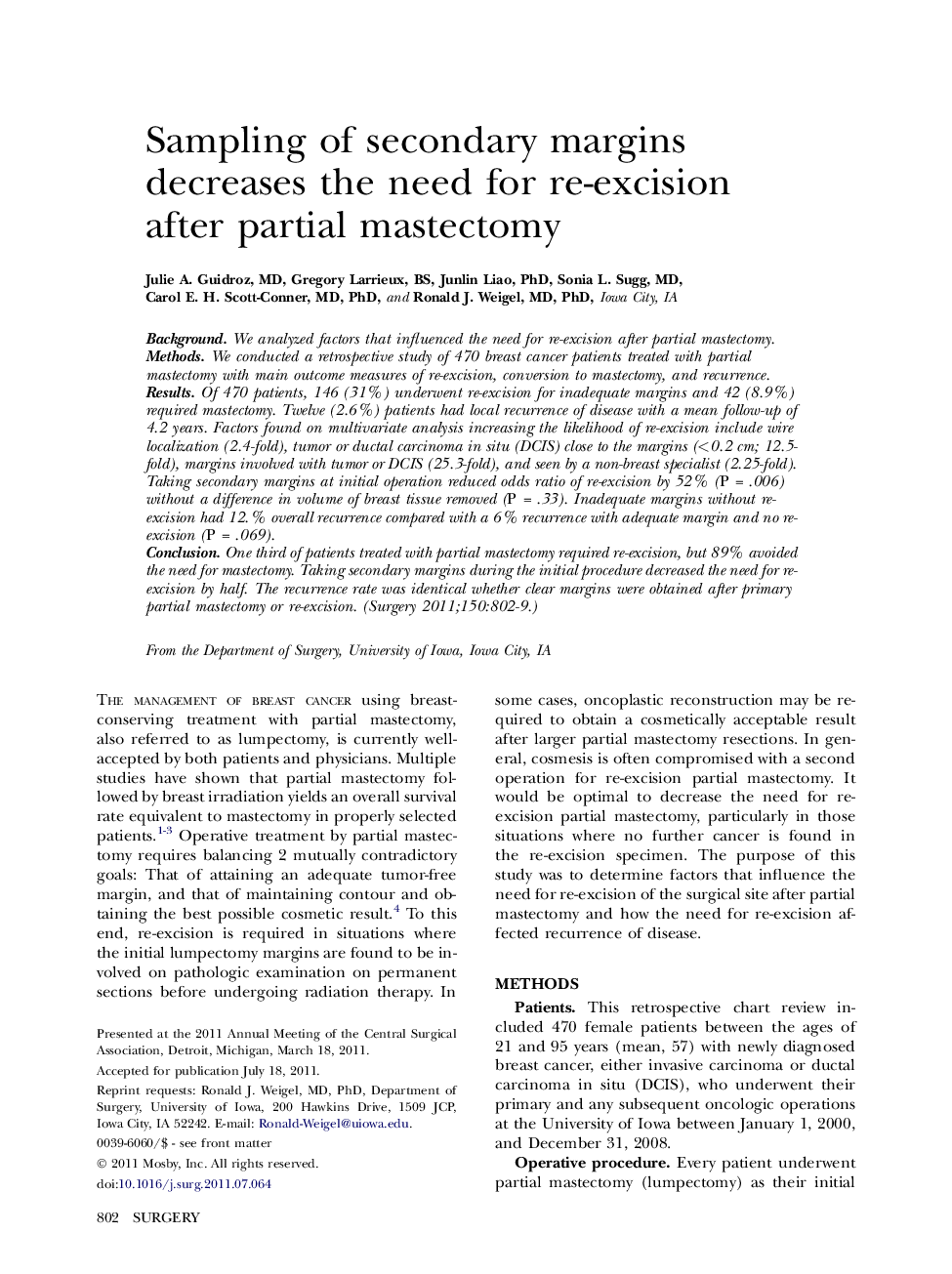| Article ID | Journal | Published Year | Pages | File Type |
|---|---|---|---|---|
| 4308584 | Surgery | 2011 | 8 Pages |
BackgroundWe analyzed factors that influenced the need for re-excision after partial mastectomy.MethodsWe conducted a retrospective study of 470 breast cancer patients treated with partial mastectomy with main outcome measures of re-excision, conversion to mastectomy, and recurrence.ResultsOf 470 patients, 146 (31%) underwent re-excision for inadequate margins and 42 (8.9%) required mastectomy. Twelve (2.6%) patients had local recurrence of disease with a mean follow-up of 4.2 years. Factors found on multivariate analysis increasing the likelihood of re-excision include wire localization (2.4-fold), tumor or ductal carcinoma in situ (DCIS) close to the margins (<0.2 cm; 12.5-fold), margins involved with tumor or DCIS (25.3-fold), and seen by a non-breast specialist (2.25-fold). Taking secondary margins at initial operation reduced odds ratio of re-excision by 52% (P = .006) without a difference in volume of breast tissue removed (P = .33). Inadequate margins without re-excision had 12.% overall recurrence compared with a 6% recurrence with adequate margin and no re-excision (P = .069).ConclusionOne third of patients treated with partial mastectomy required re-excision, but 89% avoided the need for mastectomy. Taking secondary margins during the initial procedure decreased the need for re-excision by half. The recurrence rate was identical whether clear margins were obtained after primary partial mastectomy or re-excision.
